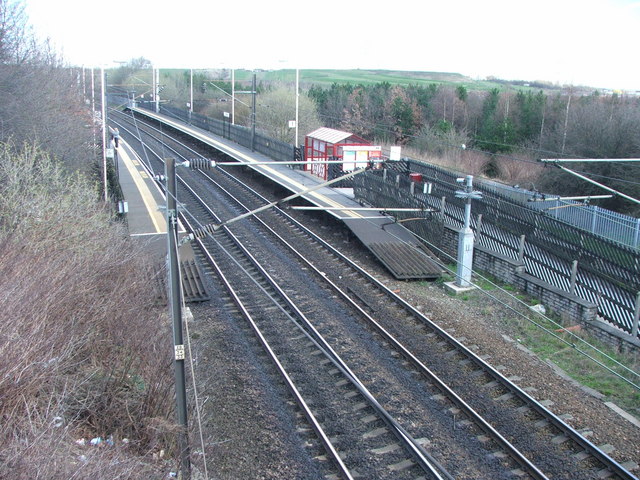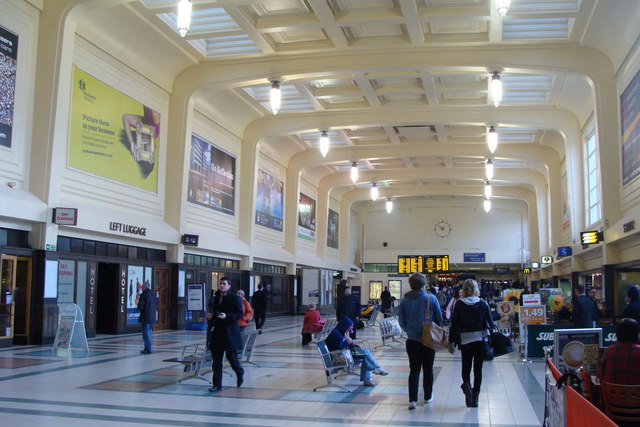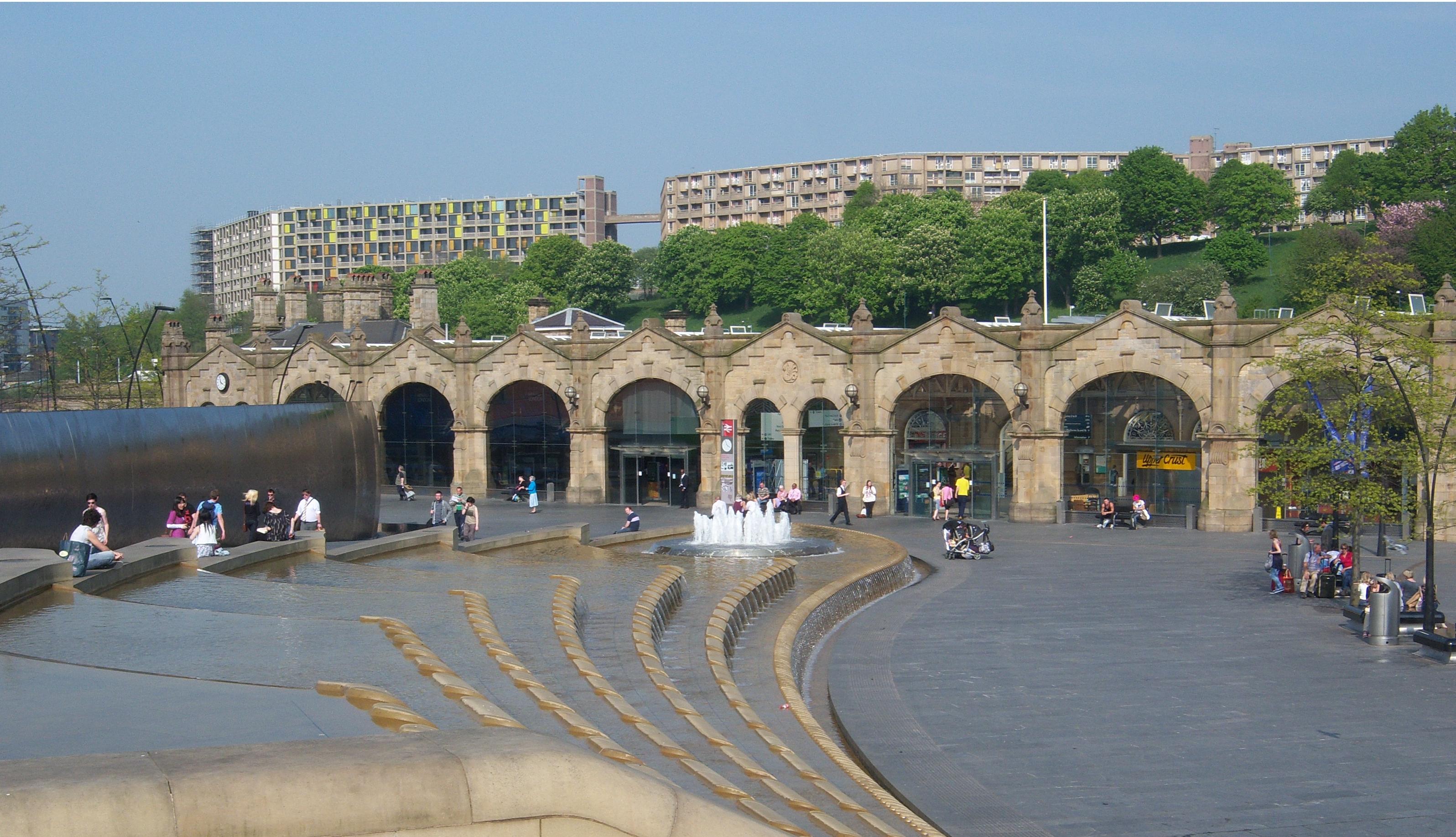|
Outwood Railway Station
Outwood railway station is situated in the Outwood district of Wakefield in West Yorkshire, England. Outwood is the first stop on the Wakefield Line after Leeds for trains going towards Wakefield Westgate, Doncaster and Sheffield. History The original station was opened by the Bradford, Wakefield and Leeds Railway in 1858, and was originally named ''Lofthouse''. This was renamed ''Lofthouse and Outwood'' in July 1865. It closed on 13 June 1960. A different Lofthouse and Outwood station, which was on a different route, opened in 1876 and closed in 1958. The station was reopened on 12 July 1988. Facilities The station is unstaffed and has two wooden platforms with waiting shelters, customer help points, digital display screens, timetable posters and automated train announcements provide running information. Level access to both platforms is via ramps. Services Monday to Saturdays two trains per hour head northbound to Leeds and southbound one train per hour goes to Doncas ... [...More Info...] [...Related Items...] OR: [Wikipedia] [Google] [Baidu] |
British Rail Class 144
The British Rail Class 144 ''Pacer'' was a diesel multiple unit (DMU) passenger train built at Derby between 1986 and 1987. BR, seeking to procure improved derivatives of the earlier Class 141, placed an order with the manufacturers British Rail Engineering Limited (BREL) and Walter Alexander to construct their own variant, the Class 144. A total of 23 units were constructed. All units have now retired from mainline service, though the majority of the units have been acquired for preservation on heritage railways and in other uses. As of December 2022, 19 out of the 23 units have been purchased following withdrawal for this purpose, of which 15 units are in operational condition. Background By the beginning of the 1980s, British Rail (BR) operated a large fleet of first generation DMUs, which had been constructed in prior decades to various designs. While formulating its long-term strategy for this sector of its operations, British Rail planners recognised that there would b ... [...More Info...] [...Related Items...] OR: [Wikipedia] [Google] [Baidu] |
Leeds Railway Station
Leeds railway station (also known as Leeds City railway station) is the mainline railway station serving the city centre of Leeds in West Yorkshire, England. It is the fourth-busiest railway station in the UK outside London (as of March 2020). It is located on New Station Street to the south of City Square, at the foot of Park Row, behind the landmark Queens Hotel. It is one of 20 stations managed by Network Rail. Leeds is an important hub on the British rail network. The station is the terminus of the Leeds branch of the East Coast Main Line (on which London North Eastern Railway provides high speed inter-city services to every half hour from the station) and is an important stop on the Cross Country Route between Scotland, the Midlands and South West England connecting to major cities such as Birmingham, Glasgow, Edinburgh, Derby, Bristol, Exeter, Plymouth and Penzance. There are also regular inter-city services to major destinations throughout Northern England including Manc ... [...More Info...] [...Related Items...] OR: [Wikipedia] [Google] [Baidu] |
Railway Stations In Great Britain Opened In 1988
Rail transport (also known as train transport) is a means of transport that transfers passengers and goods on wheeled vehicles running on rails, which are incorporated in Track (rail transport), tracks. In contrast to road transport, where the vehicles run on a prepared flat surface, rail vehicles (rolling stock) are directionally guided by the tracks on which they run. Tracks usually consist of steel rails, installed on Railroad tie, sleepers (ties) set in track ballast, ballast, on which the rolling stock, usually fitted with metal wheels, moves. Other variations are also possible, such as "slab track", in which the rails are fastened to a concrete foundation resting on a prepared subsurface. Rolling stock in a rail transport system generally encounters lower friction, frictional resistance than rubber-tyred road vehicles, so passenger and freight cars (carriages and wagons) can be coupled into longer trains. The rail transport operations, operation is carried out by a ... [...More Info...] [...Related Items...] OR: [Wikipedia] [Google] [Baidu] |
Railway Stations In Great Britain Closed In 1960
Rail transport (also known as train transport) is a means of transport that transfers passengers and goods on wheeled vehicles running on rails, which are incorporated in tracks. In contrast to road transport, where the vehicles run on a prepared flat surface, rail vehicles (rolling stock) are directionally guided by the tracks on which they run. Tracks usually consist of steel rails, installed on sleepers (ties) set in ballast, on which the rolling stock, usually fitted with metal wheels, moves. Other variations are also possible, such as "slab track", in which the rails are fastened to a concrete foundation resting on a prepared subsurface. Rolling stock in a rail transport system generally encounters lower frictional resistance than rubber-tyred road vehicles, so passenger and freight cars (carriages and wagons) can be coupled into longer trains. The operation is carried out by a railway company, providing transport between train stations or freight customer facil ... [...More Info...] [...Related Items...] OR: [Wikipedia] [Google] [Baidu] |
Railway Stations In Great Britain Opened In 1858
Rail transport (also known as train transport) is a means of transport that transfers passengers and goods on wheeled vehicles running on rails, which are incorporated in tracks. In contrast to road transport, where the vehicles run on a prepared flat surface, rail vehicles (rolling stock) are directionally guided by the tracks on which they run. Tracks usually consist of steel rails, installed on sleepers (ties) set in ballast, on which the rolling stock, usually fitted with metal wheels, moves. Other variations are also possible, such as "slab track", in which the rails are fastened to a concrete foundation resting on a prepared subsurface. Rolling stock in a rail transport system generally encounters lower frictional resistance than rubber-tyred road vehicles, so passenger and freight cars (carriages and wagons) can be coupled into longer trains. The operation is carried out by a railway company, providing transport between train stations or freight customer faciliti ... [...More Info...] [...Related Items...] OR: [Wikipedia] [Google] [Baidu] |
Former Great Northern Railway Stations
A former is an object, such as a template, gauge or cutting die, which is used to form something such as a boat's hull. Typically, a former gives shape to a structure that may have complex curvature. A former may become an integral part of the finished structure, as in an aircraft fuselage, or it may be removable, being using in the construction process and then discarded or re-used. Aircraft formers Formers are used in the construction of aircraft fuselage, of which a typical fuselage has a series from the nose to the empennage, typically perpendicular to the longitudinal axis of the aircraft. The primary purpose of formers is to establish the shape of the fuselage and reduce the column length of stringers to prevent instability. Formers are typically attached to longerons, which support the skin of the aircraft. The "former-and-longeron" technique (also called stations and stringers) was adopted from boat construction, and was typical of light aircraft built until the ... [...More Info...] [...Related Items...] OR: [Wikipedia] [Google] [Baidu] |
DfT Category F1 Stations
The Department for Transport (DfT) is a department of His Majesty's Government responsible for the English transport network and a limited number of transport matters in Scotland, Wales and Northern Ireland that have not been devolved. The department is run by the Secretary of State for Transport, currently (since 25 October 2022) Mark Harper. The expenditure, administration and policy of the Department for Transport are scrutinised by the Transport Committee. History The Ministry of Transport was established by the Ministry of Transport Act 1919 which provided for the transfer to the new ministry of powers and duties of any government department in respect of railways, light railways, tramways, canals and inland waterways, roads, bridges and ferries, and vehicles and traffic thereon, harbours, docks and piers. In September 1919, all the powers of the Road Board, the Ministry of Health, and the Board of Trade in respect of transport, were transferred to the new ministry. ... [...More Info...] [...Related Items...] OR: [Wikipedia] [Google] [Baidu] |
Railway Stations In Wakefield
Rail transport (also known as train transport) is a means of transport that transfers passengers and goods on wheeled vehicles running on rails, which are incorporated in Track (rail transport), tracks. In contrast to road transport, where the vehicles run on a prepared flat surface, rail vehicles (rolling stock) are directionally guided by the tracks on which they run. Tracks usually consist of steel rails, installed on Railroad tie, sleepers (ties) set in track ballast, ballast, on which the rolling stock, usually fitted with metal wheels, moves. Other variations are also possible, such as "slab track", in which the rails are fastened to a concrete foundation resting on a prepared subsurface. Rolling stock in a rail transport system generally encounters lower friction, frictional resistance than rubber-tyred road vehicles, so passenger and freight cars (carriages and wagons) can be coupled into longer trains. The rail transport operations, operation is carried out by a ... [...More Info...] [...Related Items...] OR: [Wikipedia] [Google] [Baidu] |
Outwood Railway Station - Geograph , including a list of schools
*
{{disambiguation, geo ...
Outwood may refer to: Places in the United Kingdom *Outwood, Greater Manchester, formerly a civil parish * Outwood, Somerset, a UK location *Outwood, Surrey *Outwood, Wakefield * Outwood, Worcestershire, a neighbourhood in Chaddesley Corbett See also * Outwood Grange Academies Trust Outwood Grange Academies Trust (OGAT) is a multi-academy trust (MAT) that operates forty schools (twenty-eight secondary and twelve primary) across northern England and the East Midlands. It is an exempt charity, regulated by the Department for E ... [...More Info...] [...Related Items...] OR: [Wikipedia] [Google] [Baidu] |
Lofthouse And Outwood Railway Station
Lofthouse and Outwood railway station served the Outwood area of Wakefield, West Yorkshire, England. It was opened by the Methley Joint Railway in 1869, 1876 and closed in 1957. Here the line from Lofthouse Junction on the line between Cutsyke and Methley of the Lancashire and Yorkshire Railway joined the GNR line between Leeds and Wakefield in a triangular junction, of which the station formed the southern corner. It was situated south of Outwood railway station Outwood railway station is situated in the Outwood district of Wakefield in West Yorkshire, England. Outwood is the first stop on the Wakefield Line after Leeds for trains going towards Wakefield Westgate, Doncaster and Sheffield. History ... which was opened in 1988 and south of the bridge of Lingwell Gate Lane. References Disused railway stations in Wakefield Former Methley Joint Railway stations Railway stations in Great Britain opened in 1869 Railway stations in Great Britain closed in 1958 ... [...More Info...] [...Related Items...] OR: [Wikipedia] [Google] [Baidu] |
Sheffield Railway Station
Sheffield station, formerly ''Pond Street'' and later ''Sheffield Midland'', is a combined railway station and tram stop in Sheffield, England; it is the busiest station in South Yorkshire. Adjacent is Sheffield station/Sheffield Hallam University Sheffield Supertram stop. In 2017–18, the station was the 43rd-busiest in the UK and the 15th-busiest outside London. History 1870 - 1960 The station was opened in 1870 by the Midland Railway to the designs of the company architect John Holloway Sanders. It was the fifth and last station to be built in Sheffield city centre. The station was built on the 'New Line', which ran between Grimesthorpe Junction, on the former Sheffield and Rotherham Railway, and Tapton Junction, just north of Chesterfield. This line replaced the Midland Railway's previous route, the 'old road', to London, which ran from Sheffield Wicker via Rotherham. The new line and station were built despite some controversy and opposition locally. The Duke of Norf ... [...More Info...] [...Related Items...] OR: [Wikipedia] [Google] [Baidu] |
Doncaster Railway Station
Doncaster railway station is on the East Coast Main Line in England, serving the city of Doncaster, South Yorkshire. It is down the line from and is situated between and on the main line. It is managed by London North Eastern Railway. It is a major passenger interchange between the main line, Cross Country Route and local services running across the North of England. It is also the point for which London North Eastern Railway services branching off to diverge from the main route continuing north towards Edinburgh. History The railway station was built in 1849 replacing a temporary structure constructed a year earlier. It was rebuilt in its present form in 1938 and has had several slight modifications since that date, most notably in 2006, when the new interchange and connection to Frenchgate Centre opened. In May 2015, construction commenced on a new Platform 0 to the north-east of the station adjacent to the Frenchgate Centre on the site of the former cattle dock. It i ... [...More Info...] [...Related Items...] OR: [Wikipedia] [Google] [Baidu] |







